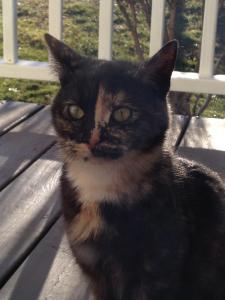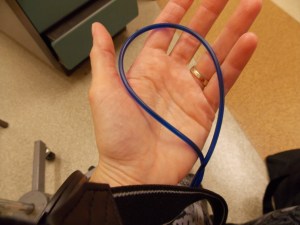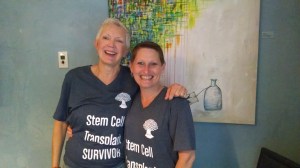
Happy New Year!!
It’s been a little over 1.5 years since my stem cell transplant and about four months since my last blog update, so, I thought it was time to pop in with a status update from one of the earlier groups of international patients to have been treated in Moscow. I’m happy to say that there are now 100s of patients currently scheduled to receive HSCT in Moscow. In large part, the increase in numbers can be attributed to a 60 Minutes story that aired in March, 2014, in Australia, as well as the many veterans since who have blogged their HSCT experiences to the world. If you think that it would be difficult for one person to make a difference, imagine my surprise when I received my 2014 blog stats from WordPress. The graphic below indicates that in 2014 my blog was viewed by people from 97 different countries. The U.S. was #1 on the list with Australia and Norway following the lead.

My 2014 Checklist – In Pictures
Below is a pictorial of tasks that I was able to accomplish during 2014, many of which I would not have been able to complete pre-transplant, or, if I could have, it would not have been without a struggle.
-

-
Completed physical therapy 7 months early.
-

-
Encouraged other HSCT patients, like Diana Rees, who is now a veteran!
-

-
Drove 15 hours each way to pick up Sochi, a rescue cat, in Atlanta.
-

-
Kissed my last of 4 extra doses of chemo goodbye!!
-

-
No more “blue devil” (chemo).
-

-
Flew solo to Dallas to meet my SOFA sisters.
-

-
Kristy, Amy, and Sheli
-

-
Me with Lisa
-

-
Me with Vicki
-

-
Walked without a foot brace for the first time in 2.5 years
-

-
Danced at my daughter’s wedding
-

-
She was beautiful
-

-
My podcast interview was published in an international best-selling book.
-

-
Gave a presentation at a local college and senior center. More on tap for 2015.
-

-
Got back to having fun and celebrating with friends.
-

-
A pink toast to life!
-

-
Continued to maintain a Russia HSCT for MS, etc. FB forum page with veterans Jeff Root, Tammy Richert and Vicki Wilson
My Recovery Status
– Still walking without a trekking pole 98% of the time. Only required for rugged terrain or longer walks.
– Still walking without a foot brace since July, 2014. I do not foresee having to wear one again…ever.
– By the grace of God, I have never suffered from MS-related cognitive issues. My cerebral clarity remains untouched!!
– I do retain a degree of spasticity in my right arm, hand, fingers and foot. See pic of right-handed spasticity below. My right hand no longer naturally extends.

– I still retain lack of sensation in my fingers (one thumb still intact), toes, right ear and portions of my midriff.
– Intermittently, I will experience the MS Hug (rib cage spasticity). I may have it for an entire week and, then, not for two months. I may have it for a day, then, not for a week. It’s important not to wear a tight bra or clingy shirt, as it can trigger my Hug.
– I continue to experience a degree of imbalance that also varies, however, nothing as bad as it was pre-transplant. I attribute a large part of my ability to walk without assistance to the improvement in balance.
– I do continue to suffer from coldness in my right arm/hand/fingers. It is not a 24/7 situation, but, once it gets cold, it takes hours to get warm again.
– I no longer have shooting electrical shocks running through my eyes.
– My most nagging remaining symptom is foot drop, which has decreased significantly, but worsens as they day goes on or the longer I walk. I do my best to rest in between walking to reserve my foot strength and function.
– My three MRIs that I have had since I returned from Moscow have all been completely stable. No MS progression (Thank you, Dr. Fedorenko).
My Outlook
My outlook and attitude will always remain positive. That’s just my style! On average, an HSCT patient will realize the majority of their improvements within the first 2 years following transplant, however, improvement has also been evidenced at 3-5 years. My case was thrown a bit of a twist when it was recommended (immediately prior to beginning my HSCT) that, based on my history of failing to respond to every MS drug/treatment that I tried (Betaseron, Copaxone, Gilenya, Tysabri, Solumedrol, Ampyra), I have one year of followup chemo after my transplant. Given that, I’m kind of the “odd man out” in that I have no other Moscow HSCT patients, nor patients from other HSCT facilities who have been pre-emptively prescribed followup chemo.
So, what’s a girl to do? I’ll tell you. Recovery is hard work. I plan to continue stretching and strengthening every single day and will most likely have to do that for the rest of my life. Fair enough. I will continue to move…no excuses. I will accept whatever neurologic shortcomings I have been dealt, knowing the symptoms that remain will be all I will ever have (no more guessing what MS will take next…party over, MS!). I will continue to update via this blog as I progress with my recovery and life. I will gently step away from the HSCT spotlight to relentlessly pursue my dreams in whatever form they may come. I will remain forever grateful for the gift of HSCT.
As always, peace and love from the Pennsylvania countryside.
Brooke






















